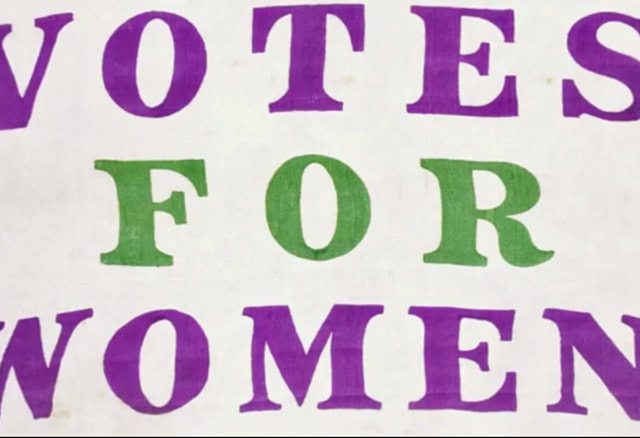|
Purple is a secondary colour made by combining red and blue. The word was first used in English in the year 975 AD, although, it was spelt purpul. Many shades get confused as purple, for example, violet and lilac, however, purple has its place on the traditional colour wheel. The confusion arises from the term Tyrian purple, which ranged from crimson to bluish purple. To make things more confusing, each country tends to have a different definition of purple, resulting in a variety of shades. In France, purple is described as “a dark red, inclined toward violet” and in German Purpurrot, meaning “purple-red”. Confusion aside, it is generally agreed that the colour purple is the colour of kings, nobles, priests and magistrates. This idea formed as early as 950 BC and it is believed the kings of Ptolemaic Egypt wore purple as did Alexander the Great. The Roman custom of wearing purple togas may have stemmed from this or may have been introduced by the Etruscans. An Etruscan tomb painting from the 4th century BC shows a nobleman wearing deep purple. The Byzantine Empire continued to use purple as the imperial colour. In Western Europe, Charles the Great, also known as Charlemagne, was buried in a purple shroud. After the fall of Constantinople to the Ottoman Empire, however, the colour lost its imperial status and was replaced with scarlet. Throughout the medieval and Renaissance eras, purple was phased out of royal clothing and cardinals were no longer allowed to wear the colour on the orders of Pope Paul II. On the other hand, purple robes became the standard among students of divinity. The colour purple regained its popularity during the 18thand 19thcenturies. Paintings of Catherine the Great show her wearing a light purple dress, although, some may call this mauve. Queen Victoria wore a gown of a similar colour to the Royal Exhibition of 1862, which encouraged factories to start producing purple dyes, making them readily available to everyone and not just royalty. Purple became a popular choice of colour amongst Pre-Raphaelite artists and it was said to be the favourite colour of the Austrian painter Gustav Klimt. George VI wore purple for his official portrait and his daughter, Elizabeth II, used the colour on the invitations to her coronation.
There are several “Purple Mountains” around the world, some of which are so named due to the colour of the rock and others because of the shade the clouds form at dawn and dusk. These mountains can be found in Nanjing (China), Ireland, Wyoming, Alaska, Oregon, Washington and Colorado.
Although the colour purple had been phased out of imperial families, the British Royal Family continues to use the colour on ceremonial and special occasions. In Roman Catholic Liturgy, purple symbolises penitence and priests may wear a purple stole when they hear a confession. They also wear a purple stole or chasuble during the periods of Lent and Advent. In other traditions, purple is associated with vanity and extravagance. This is because it is a colour that easily attracts attention. It is a colour associated with the artificial and unconventional due to the infrequency of its appearance in nature. It was also the first colour to be synthesised. In the past, purple was a sign of mourning in Britain. The first year after a death, mourners traditionally wore black and in the second year, they wore purple. This may have stopped being common practice after Queen Victoria decided to wear black for the rest of her widowhood. In China, the colour purple represents awareness, physical and mental wellbeing, strength, and abundance. In some cases, it also symbolises luck. In Japan, it is the colour of wealth and privilege. On the Thai solar calendar, it is associated with Saturday. Grieving widows in Thailand wear purple as a sign of mourning. The colour purple is also significant in the Bible. Those who have read my article about the colour blue will already know that purple is an important colour. It appears roughly thirty times in the book of Exodus when describing the decoration of the tabernacle. The Israelites were instructed to make several curtains “twenty cubits long, of blue, purple and scarlet yarn and finely twisted linen.” (Exodus 27:16) I will not regurgitate everything I have already written but these instructions prove that the colour purple has a principal connection with God. Later, in the book of Numbers, the Kohathite tribe are instructed to “remove the ashes from the bronze altar and spread a purple cloth over it” (Numbers 4:13) every time the tabernacle is moved. As we have also seen when looking at the colour blue, purple appears in the books of Esther and Jeremiah. The garden of the palace of Susa was decorated with blue linen and cords of white and purple. (Esther 1:6) When King Xerxes awarded Mordecai after the death of Haman, Mordecai was dressed in royal garments of blue and a purple robe of fine linen. (Esther 8:15) In Jeremiah, we are told that people had started to dress in blue and purple, believing themselves to be as important as God, however, God put them back in their place. Let’s have a look at some other examples of the colour purple in the Bible. In the book of Judges, we are told that purple garments are the clothing of kings. In the book of Daniel, King Belshazzar announces that whoever interprets the strange writing on the wall will be awarded with purple clothing.
In the epilogue of Proverbs 31, we are told about the wife of a noble character. The chapter tells us she is worth more than rubies and should be honoured. She provides for her husband and looks after her household. She makes sure there is always something for her family to eat but, most importantly for us, “she is clothed in fine linen and purple,” (Proverbs 31:22) a noble, respected colour. On the other hand, the poem in Lamentations 4 reveals that wearing purple does not equate to godly status. The colour does not protect people from God’s wrath or entitle them to sin without punishment. “Those brought up in royal purple now lie on ash heaps.” (Lamentations 4:5) These self-important people, clothed in royal colours, have become the victims of God’s anger. The most noteworthy use of purple occurs in two of the Gospels, Mark and John. Although purple is a royal colour, it is used negatively in these books. We all know after Jesus was arrested he was crowned with thorns and mocked for being the “King of the Jews.” What is often missed out of this story, however, is the purple robe they also dress him in.
Purple is also mentioned in the Gospel of Luke, however, not in relation to Jesus’ arrest and crucifixion.
There are four more mentions of the colour purple in the Bible. They each indicate someone’s wealth and status, however only one has positive connotations:
Overall, the colour purple is important and symbolic of God. Although bad things happened to some people who wore purple, it is not the colour that was the cause but rather their actions. Purple is a colour that represents royalty, wealth and nobility, but unless we put God first, it does not matter what we wear. As I did for the colour blue, I am finishing this article with a handful of phrases and idioms involving the colour purple. Feel free to add your own.
2 Comments
11/22/2021 08:47:33 pm
I want to learn more about colours that was use in the Bible
Reply
1/19/2023 04:10:12 am
I'm given a gift purple I need help on how to work with it
Reply
Your comment will be posted after it is approved.
Leave a Reply. |
©Copyright
We are happy for you to use any material found here, however, please acknowledge the source: www.gantshillurc.co.uk AuthorRev'd Martin Wheadon Archives
June 2024
Categories
All
|



 RSS Feed
RSS Feed